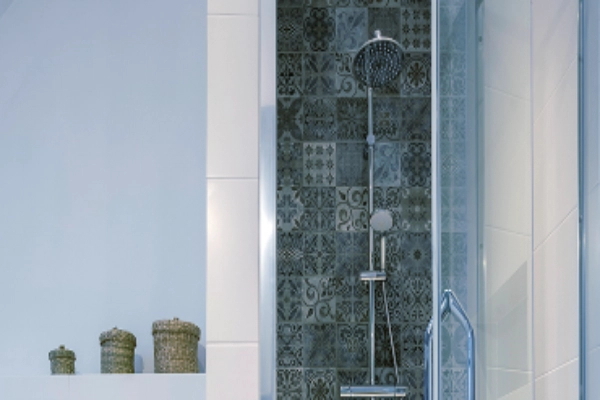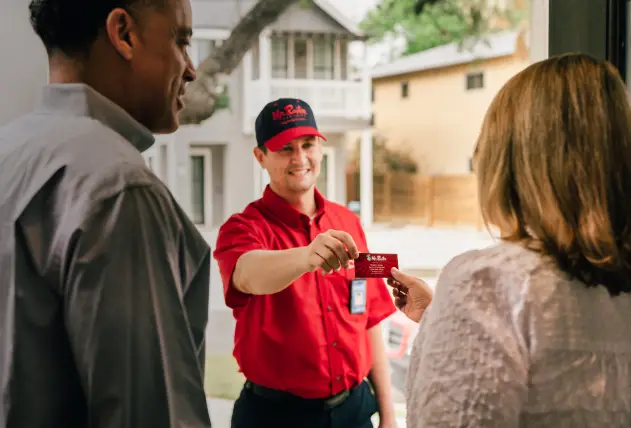
Cold Water Not Coming out of the Shower
The only thing worse than a cold shower is a scorching-hot one. If there’s no cold water in your shower, you’ve come to the right place. Lack of cold water is usually caused by a defective pressure-balancing valve in a cartridge. This part is located inside the shower faucet. So, are you feeling handy? With a few tools and some patience, you may be able to replace the valve cartridge on your own.
No Cold Water in Shower
Begin troubleshooting by checking other faucets around the house. If these all don’t have cold water, you can begin to trace the problem. Look for the shutoff valves in your basement or wherever the main water supply line is. A valve may have been accidentally turned off. Hopefully, you can just turn the shut-off valve back on and be good to go. If this isn’t the problem, you should call a professional.
If the other faucets around the house do have cold water, then the problem is most likely the pressure-balancing valve.
Why Pressure-Balancing Valves Fail
Pressure-balancing valves regulate both pressure and the ratio of cold and hot water that flows out of the showerhead. Over time corrosion and mineral buildup can ruin a cartridge, especially if the faucet is not turned on very often.
Replacing a faucet valve cartridge isn’t hard but requires taking the faucet apart. The hardest part of this repair is getting the old cartridge out. This is a good time to call a professional if you don’t feel comfortable with this repair. Feeling confident? Keep reading:
How to Replace a Shower Cartridge
The first step is purchasing a new shower cartridge at your local hardware store. The best way to find an exact replacement cartridge is to remove the old cartridge and bring it with you to the hardware store. This job is easiest with a cartridge puller, which you can purchase at the hardware store.
Shower Cartridge Replacement Tools
- Flathead and Phillips screwdriver
- Cartridge puller or tap with matching 4” – 6” bolt
- Hex keys / Allen wrenches
- Needle-nose pliers
- Silicone or plumber’s grease
- Locking pliers
Here are the steps for removing the old cartridge and replacing it with a new one. Use this guide in conjunction with any instructions from the faucet or cartridge puller manufacturer.
How to Replace a Broken Shower Cartridge in 10 Steps
1. Turn off the water supply to the shower.2. Place a towel over the drain so dropped screws don't fall in.
3. Remove the faucet handle and any metal covers or trim plates (depending on the manufacturer, there may be a small set screw or hex screw at the bottom of the handle or behind a plastic cap).
4. Take a picture of the inside of the faucet body (to reference for reassembly).
5. Remove other parts inside the faucet body.
6. Dissolve any mineral deposits and dirt with a commercial cleaner.
7. Pull the retainer clip out of the faucet body with needle-nose pliers.
8. Remove the cartridge. Use the cartridge puller you purchased.
9. Reinstall the new cartridge with silicone or plumber's grease. (Pay attention to the orientation!)
10. Reinstall the valve stem, retainer clip, and faucet parts. (Reference the photos you took!)
Turn on the water supply and enjoy your cold shower!
Professional Plumbers Who Care
Replacing a shower cartridge is an ambitious DIY project. The plumbing experts at Mr. Rooter Plumbing are ready to help whenever you need them. We won’t begin a job until we tell you how much it will cost and what we’ll do. We believe in transparency every step of the way. If you need cold water in your shower sooner rather than later and don’t want to carve out an afternoon for replacing a shower cartridge, just call or request an estimate on our homepage.
Mr. Rooter Plumbing is part of the Neighbourly network of home service providers. Our family of home service experts are committed to providing reliable services, and we even share some trade secrets on our blogs.
This blog is made available by Mr. Rooter LLC, for educational purposes only to give the reader general information and a general understanding of the specific subject above. The blog should not be used as a substitute for a licensed plumbing professional in your state or region. Check with city and state laws before performing any household project.

